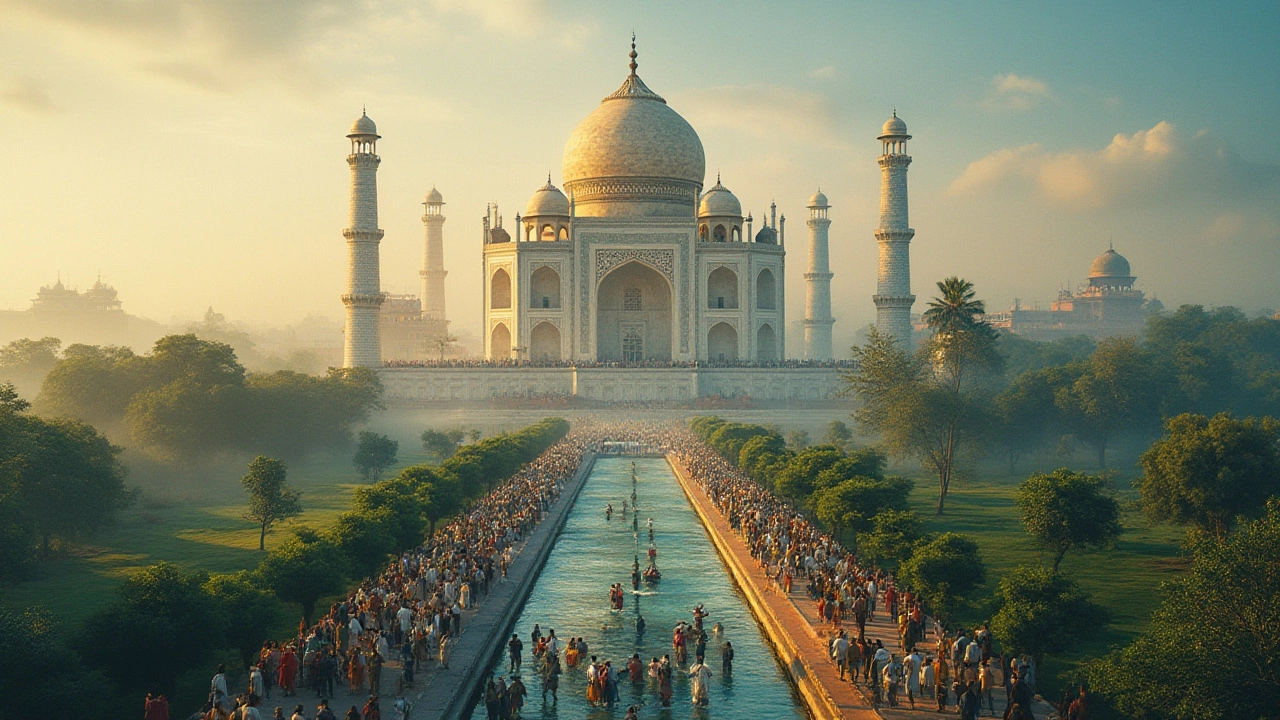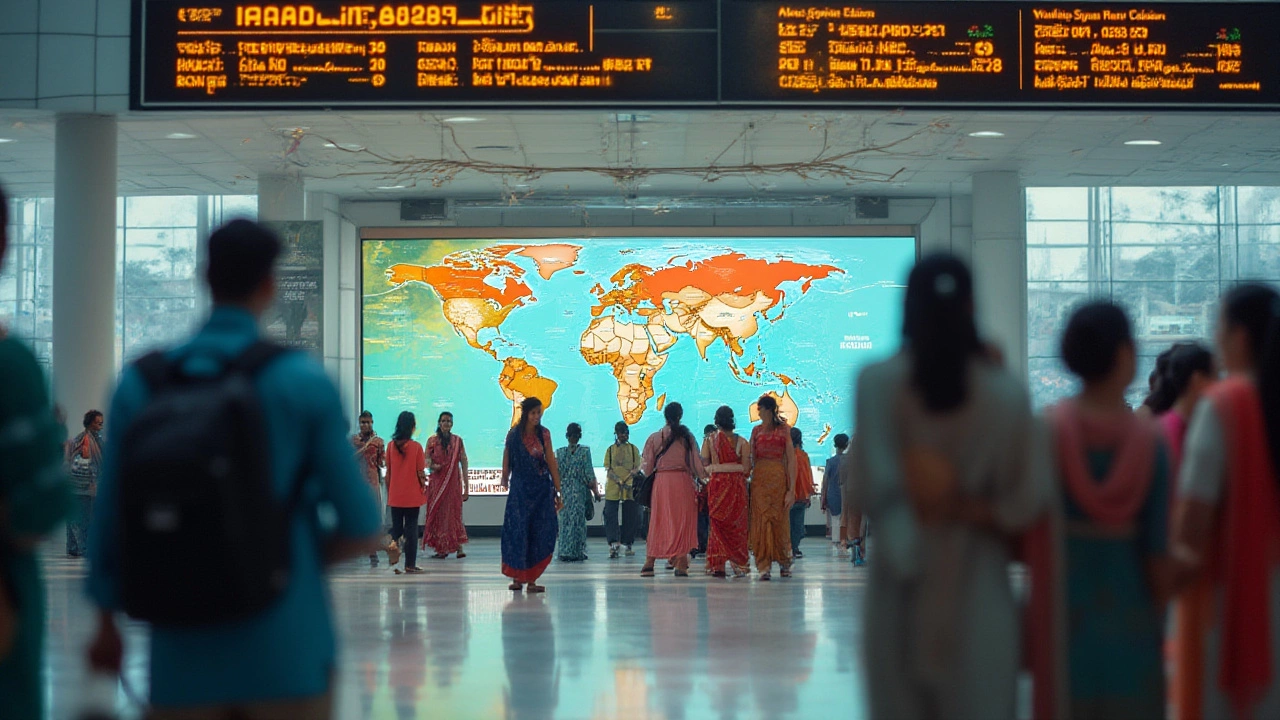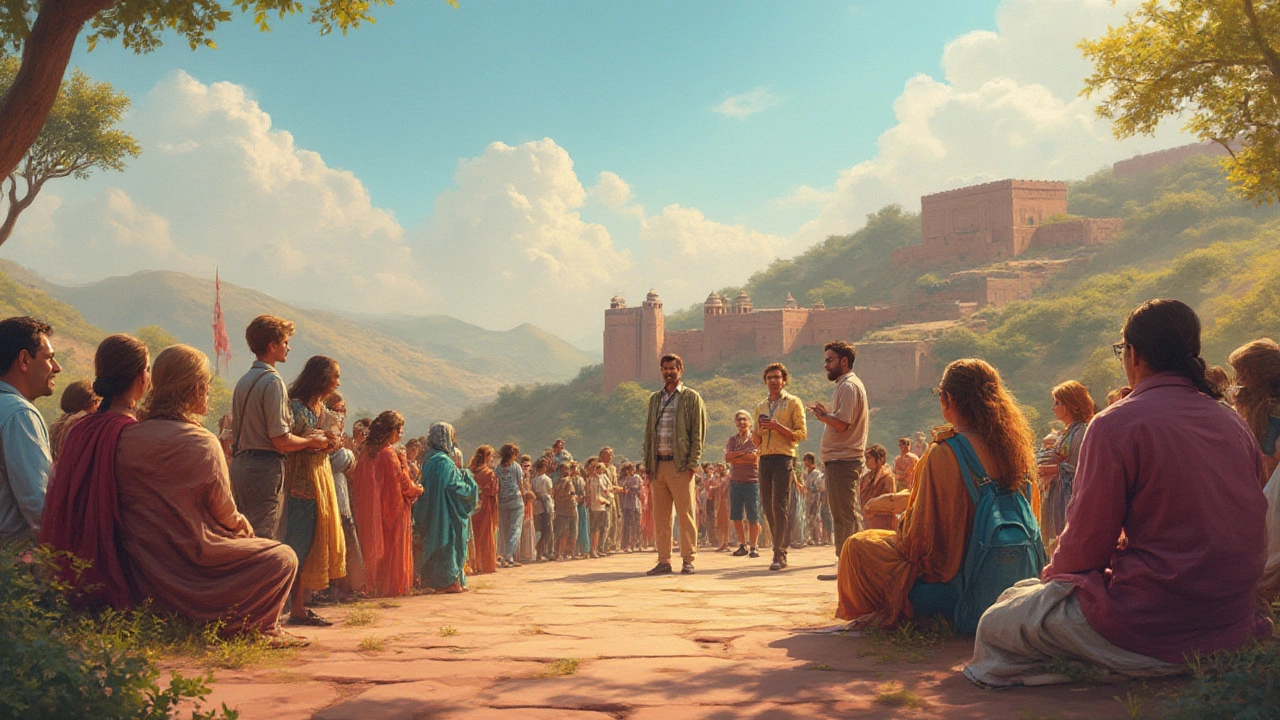India's Global Tourism Rank: Facts, Stats, and What Travelers Need to Know

Sometimes, deciding where to travel feels like gambling with your vacation days. But let’s be honest—there’s a special electric thrill about knowing you’re heading somewhere that ranks high on the world stage. Few countries pack the punch of India on the global tourism scoreboard. Curious how it stacks up against global tourism giants and what’s been changing lately? The answer’s more surprising than most people expect.
India’s Position in World Tourism Rankings: Looking at the Numbers
India has long been a favorite with backpackers, history buffs, and spiritual seekers. But how does it measure up against the likes of France, Spain, or China when we talk sheer visitor numbers? According to the most recent United Nations World Tourism Organization (UNWTO) data from 2023, India ranks 22nd worldwide in terms of international tourist arrivals. That sounds modest if you think only about visitor numbers. But hold on—let’s untangle what that ranking actually means.
In 2023, France topped the leaderboards as the world's most visited country, showing off its old-world charm, food, and effortless elegance with a staggering 89 million international tourists. Spain, the United States, China, and Italy round out the top five. India, with around 17.8 million international arrivals, holds steady in 22nd place. That number nudged upward from 2022 and absolutely blows away some big names in Asia and the Middle East. India’s sheer size and super-diverse landscape give it an edge—it ranks even higher on some tourism indices that factor in cultural heritage, attractions, and natural beauty.
For instance, the World Economic Forum's Travel & Tourism Development Index, last updated in 2024, puts India at 39 out of 117 economies in its overall tourism development ranking. This measures not just tourist arrivals, but infrastructure, safety, sustainability, heritage, and more. Compared to nearby heavyweights like Thailand (27th in arrivals) or even the UAE (35th in arrivals), India’s climb is solid, especially considering it’s bridging high population density, ongoing development, and old-school charm in one package.
Here’s a quick breakdown comparing recent arrival numbers and specific ranks from various global tourism reports:
| Country | International Arrivals (2023, millions) | Global Rank (Arrivals) |
|---|---|---|
| France | 89 | 1 |
| Spain | 84 | 2 |
| United States | 66 | 3 |
| China | 45 | 4 |
| Italy | 39 | 5 |
| India | 17.8 | 22 |
But numbers don’t always paint the full picture. Adventure, spiritual wellness, bustling bazaars, lavish palaces, and wild festivals draw millions, but many Indian destinations still fly under the global radar. Odd, right? With the Taj Mahal, palaces in Rajasthan, Goa’s beaches, the Kerala backwaters, and the dramatic Himalayas, there’s hardly a spot that doesn’t offer flavor and surprise.
One reason for the 22nd rank (despite India’s global name recognition) is that international leisure travelers are still a small piece of the pie. Domestic tourism dominates the scene. Back in 2023, over 1.4 billion people traveled within India—that’s more than the combined populations of Europe and the United States!
A recent comment in The Hindu, quoting the UN World Tourism Barometer, put it like this:
"India’s growing appeal among international travelers reflects investments in infrastructure, improved visa policies, and a renewed focus on unique heritage assets. Yet, the biggest story lies in India’s own surge in domestic travel.”
That domestic surge adds a wallop of energy, and it’s quietly turning small towns into the next hotspots. Travelers are looking for hidden gems—hiking trails in Sikkim, local food in Lucknow, slow travel in Wayanad—even as the big cities like Delhi and Mumbai soak up much of the buzz.

What Makes India a Magnet for Both International and Domestic Tourists?
If you’ve ever wandered into a local market in Jaipur, sailed at sunset in Varanasi, or escaped the chaos for tranquil tea estates in Darjeeling, you already know why India has this magic pull. But let’s break it down further. Why do travelers—whether from Europe, North America, Southeast Asia, or next door in Bangladesh—keep coming?
It boils down to world-famous heritage attractions, affordable adventure, food scenes that put most countries to shame, and a sense of discovery you just can’t replicate. There’s an adrenaline rush you get when you spot a tiger in the wild at Ranthambore, or when you realize you’re standing under a 5,000-year-old temple. Where else does this mashup of old and new come so alive?
Here’s what travelers—myself included—love about the experience:
- India tourism rank is high for cultural heritage, with UNESCO recognizing 42 sites as World Heritage (that’s more than Russia and about equal to the UK).
- Street food is genuinely world-class. Head to Delhi for chaat, Mumbai for vada pav, or hyderabadi biryani—no fancy restaurant needed to eat like royalty.
- Adventure junkies flock to Ladakh for motorbiking, Rishikesh for white-water rafting, Goa for paragliding, and Hampi for rock climbing.
- Ayurvedic retreats, yoga ashrams, and wellness resorts make India the spiritual escape for travelers burnt out on the grind. If you want to reset your mind and body, the options are limitless.
- Shopping runs from luxury designer brands in Mumbai and Delhi to handicraft bazaars in Bikaner or floating markets in Srinagar. There’s literally something for everyone—from budget souvenirs to rare silks.
- Value for money. Even luxury travel here costs less than similar trips in Europe or the US, which is why digital nomads and long-stay travelers keep coming back.
Despite these strengths, there’s a tougher side: infrastructure is catching up to global standards, especially outside major cities; crowd management at top attractions like the Taj Mahal is a work in progress; and sustainable tourism is still gaining ground.
If you’ve ever worried about logistics or language, know that cities like Bangalore, Chennai, Kochi, and Kolkata are modernizing fast. There’s even a government e-visa program making travel planning less stressful for most nationalities. My wife, Adelaide, and I tested it on our last trip—the process took 20 minutes, no joke.
Traveling with our daughter, Evangeline, we noticed how family-friendly India is becoming, too. Hotels offer kids' play spaces, rental cars have child seats, and wildlife parks are surprisingly accessible. For solo travelers, women and men alike, group tours and safer transit options are multiplying, especially since 2023’s spike in international arrivals kicked off a new tourism push.
If you’re looking for seasonal tips, winter (October-March) is hands-down the busiest and most comfortable, especially if you want to see Rajasthan, Delhi, or Agra without the headache of relentless heat. Summer works for the Himalayas and South India when the North is sizzling. Monsoon (July-September) is quieter, lush, and green—perfect for slow travelers and photographers.

Where Is Indian Tourism Heading? Trends, Opportunities, and Tips for Travelers
India’s government keeps doubling down on “Incredible India,” a campaign that nudges travelers to look beyond classic spots. New investments in eco-tourism, rural tourism, and adventure sports are sprouting up everywhere. By 2025, experts predict India will jump a few rungs up the world rankings, possibly breaking into the top 15 as infrastructure and connectivity improve further.
Tech is playing a huge role, too. Booking train or bus tickets? A few years ago, that was a bureaucratic nightmare. Now, you’ve got seamless online systems, digital payment options everywhere (even tea stalls accept QR codes), and ride-hailing services that make city travel a breeze.
The Indian Ministry of Tourism’s new stats show a shift in traveler behavior. More folks are seeking eco-friendly lodges, community-based tours, and hands-on experiences. Instead of racing through ten cities in a week, visitors are choosing homestays in the mountains, guided food walks in Kolkata, or workshops with local artisans in Gujarat. This trend helps local economies and keeps the whole travel experience authentic.
Safety, always top of mind for first-time visitors, is improving too. The rollout of tourist police units, better lighting in public spaces, and upgrades at transportation hubs are making a noticeable difference. More travel influencers and solo female travelers are covering India, smashing old stereotypes and sharing hacks for safe, smooth trips.
Want the best out of India? Here are a few tips from recent travels and the latest studies:
- Choose local guides to unlock hidden corners of big cities—it’s the kind of knowledge you won’t find in any app.
- If your trip covers multiple regions, rely on India's extensive flight network for faster hops; but if time allows, a luxury train journey (like the Maharajas’ Express) is unforgettable.
- Pack both sunscreen and a scarf—a scarf comes in handy for temples, trains, or unexpected weather swings.
- Book main attraction tickets online in advance. This skips monster lines at places like the Taj Mahal, Amer Fort, or Mysore Palace.
- Bring ATM cards, but also carry a small stash of cash for rural travel (where digital payments aren’t universal yet).
- Watch for local festivals. Holi, Diwali, Durga Puja—these transform everyday cities into wild, colorful adventures. Prepare for crowds, and don’t wear your best shoes!
- Keep tabs on travel advisories for weather, health, or regional festivals that can impact transportation. India’s official “Incredible India” site is pretty reliable for updates.
It’s wild that a country ranking 22nd in international arrivals commands so much fascination. Maybe it’s because statistics don’t measure wonder—and if you ask any seasoned traveler, they’ll tell you, there’s no country quite like India in the way it overwhelms and enchants. Every trip throws a few curveballs (traffic, unexpected rain, cows in the road), but the payback in adventure and memory-making is hard to top. India’s rank is one thing; its impact lingers a thousand times beyond the numbers.